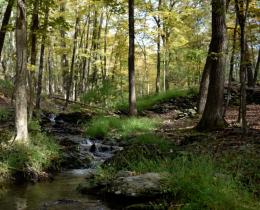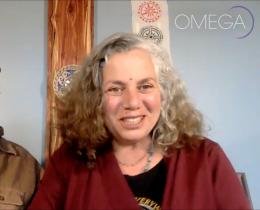After several weeks of cool and rainy weather, sunshine and mild temperatures have marked this past week, sending me outdoors to assess my back garden and bemoan the explosion of wild grasses sneaking up from the canyon, threatening to overtake the flower bed.
Ours is a less manicured garden than most; it’s a long narrow bed at the top of a steep slope, where the relentless advance of wild grass is only temporarily slowed by the ice plants and succulents that populate the hillside. I have tried, ever since we moved here a few years ago, to stem the advancing tide, admiring the more manicured landscapes of my neighbors. But after more than few tumbles down the slope, I’ve had to accept I cannot overpower what Nature so stubbornly returns to me each spring.
This year, I’ve entered into a state of peaceful co-existence. I’ll control the flower bed at the top of the hill. Mother Nature can have the steep slopes below it.
Submit to nature, return to nature.
These words, written by the Japanese poet Matsuo Basho, took on a different meaning than he might have intended this week as I took stock of my garden. Basho was perhaps the most famous of the Japanese haiku poets. While he described nature in simple language, he conveyed, through his imagery, its beauty and the emotion it evoked. Here are three examples:
No one travels
along this way but I—
this autumn evening
The year’s first day
thoughts and loneliness—
the autumn dusk is here
Clouds appear
and bring to men a chance to rest
from looking at the moon
The Basics of Haiku
Haiku is a simple poetic form about fleeting moments in nature or the changing seasons. The essence of the form lies in its visual intensity, painting a picture in the readers’ mind, calling our attention to an observation and a story hinted at behind the image.
Its most common form is generally written in three lines, the first line five syllables long, the second in seven syllables, and the third in five, for a total of seventeen syllables. The division, when translated from Japanese (as you may have noticed in Basho’s examples), is not always perfect, but the basic three-line form is still present.
Haiku teaches us the power of observation, of being present to the here and now. I think it also teaches gratitude. Focus on one small moment of nature, and the noise from the external world vanishes as you open your eyes—and heart—to the smallest details, the fleeting moments and beauty in the natural world. You become aware of the feelings such moments evoke in you.
While the first level of haiku is always located in nature, the second is most often a reflection on nature, often characterized by themes of egolessness, acceptance, aloneness, humor, silence, awakening, compassion, even death. It’s why haiku is a poetic form that is often used in emotional healing, because a dialogue with nature is more than just observation; it takes us inside ourselves.
Writing haiku is a kind of meditation—calming and quiet. Perhaps haiku, poetry in its simplest form, offers a prescription for a larger life.
Why not take the time to “submit to nature” or “return to nature” yourself? Step outside, take a walk. Pay attention to what is in your line of sight. Find the inspiration right outside your door, waiting for your own haiku poem.
Make notes, for example of:
- ducks swimming in a pond
- the budding leaves on tree branches
- a songbird at the feeder
- a buzzing bee hovering at a flower
Try to find two images that create a striking impression when connected and write them down. Keep paring your sentences down until you have captured the scene and your underlying mood—all in seventeen syllables. Try expressing yourself—what you find—in a haiku poem. You might be surprised!



